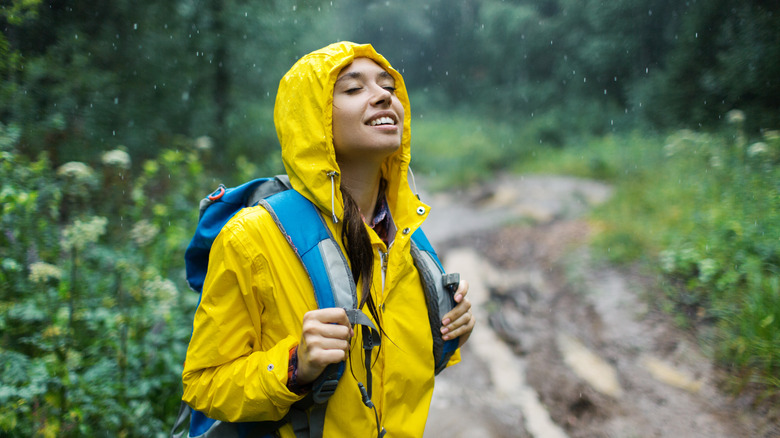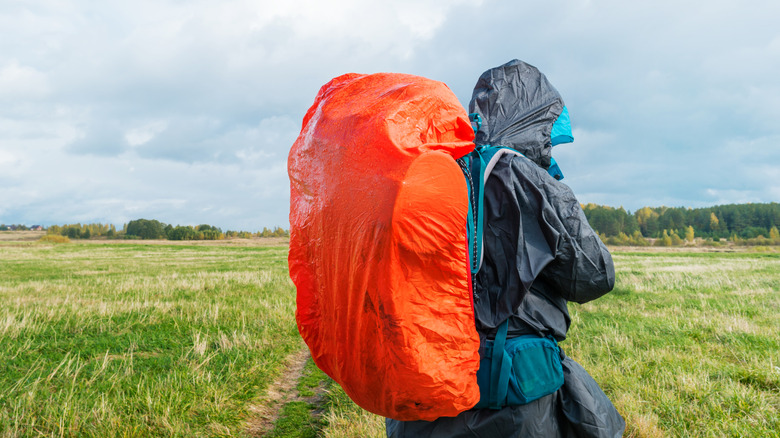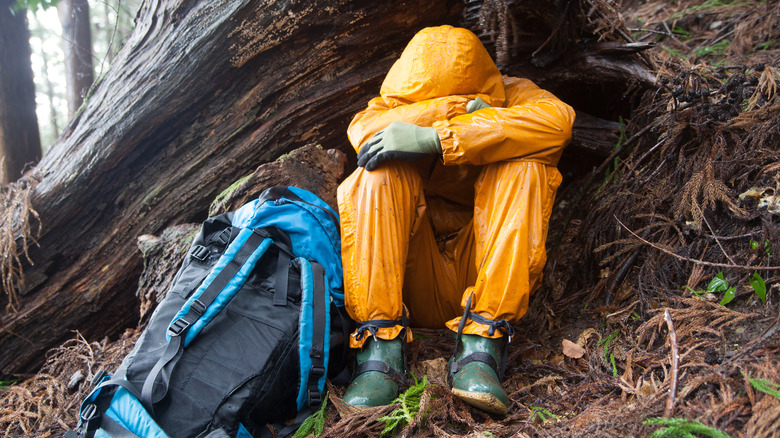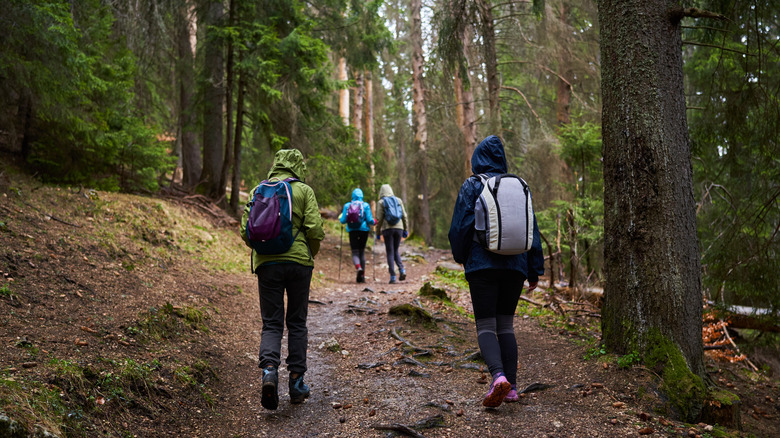How To Stay Safe While Hiking In Inclement Weather – Even After Heavy Rain
There's nothing worse than planning a hike and waking up to realize the forecast is calling for cloudy skies and rain. Just like that, your day is ruined. But what if an overcast sky doesn't mean your hiking plans are fraught? In fact, preparing properly for an inclement hiking day could end up being a worthwhile excursion.
Some of the best hikes can take place after a heavy shower, with the slight mist over the trees and cooler temperature making it feel like you've been transported to the hills of a luscious fantasy land. However, if you're going to hit the trails after a storm passes through, you're going to want to take precautions to make sure you and your hiking buddies stay safe during the journey. With the proper gear and understanding of your area's climate, there's no reason why you shouldn't be able to enjoy a rainy hike.
Prepare your hiking gear for rain
If it seems like it's going to rain at any point during your hike, be prepared to waterproof yourself and your gear. A rain jacket is an obvious essential, but be sure you're able to cinch or tighten your sleeves, hood, and waist in case the rain gets heavy. Your pants should be waterproof as well and cover your boots. Defer to synthetic materials over cottons or wools, as these will weigh you down and make you colder when wet. Make sure your hiking shoes have waterproof elements incorporated to prevent water from soaking your feet. The wetter your feet get, the easier it will be for blisters to form.
Waterproof protection for your gear is needed to keep your stuff free from water damage. Invest in a backpack rain cover to waterproof your bag while hiking, or use a heavy-duty trash bag in a pinch. Dry sacks, waterproof cases, and even Ziploc bags can make suitable covers for smaller valuables. However, keep in mind that the DIY budget options are not ironclad when it comes to waterproofing. Be sure to keep dry clothing in your bag, especially socks. You never know when you may need to swap out wet underlayers for something drier.
Understand your terrain and potential hazards
Different trails and terrains will be affected differently by the weather. For instance, routes with mud or clay tend to erode much faster and are more slippery to hike on. In this case, you may want to give the trails a day or two to dry out before hiking them. If you're going to hike in the rain, a rocky trail is preferable because it's safer from erosion, and you won't be as likely to slip on mud.
The best kind of trail is rocky, wooded, and low altitude. Flat areas are susceptible to flash flooding, and mountains are safe in light rain, but can prove dangerous in heavier storms. Rivers and streams can swell during heavy rains, leading to turbulent waters and wider waterways to cross. Try to avoid crossing waterways if possible, but if you absolutely need to, ensure you have unhooked your bag in case you need to quickly free yourself from it.
On colder days, hypothermia is a risk if you aren't properly insulated and waterproofed. Pay attention to symptoms such as shivering, lack of coordination, and personality changes, particularly when someone is quieter than usual. Hypothermia can be fatal, so an immediate evacuation is necessary. However, if you aren't able to leave the trail right away, you can manage mild hypothermia by finding an area out of the rain, swapping your wet layers for dry ones, fueling up with food and water, and generating heat by moving your body.
Know when to back out
Every hiker needs to have a backup plan on days like this. Keep more food, water, and clothes on you than you think you need, in case you end up doing some bonus miles on the trail. Be sure to let a friend or family member know your plans before you leave, in case you're lost, injured, or hurt on the trail.
If you're a beginner, it's in your best interest to avoid hiking during active rainfall, especially by yourself. However, no matter what your hiking experience level is, be sure not to overlook weather conditions while planning a hike. While hiking in the rain can be fun during lighter showers, heavy storms, thunder, or lightning are signs that today isn't the day to hike. Intense rain could limit your visibility, increase the likelihood of flash floods or mudslides, or you or nearby trees could be struck by lightning. If hypothermia is starting to set in, you should immediately stop, dry out, and eat until you can get off the trail. Knowing your limits as a hiker is as important as the trails you hike.



